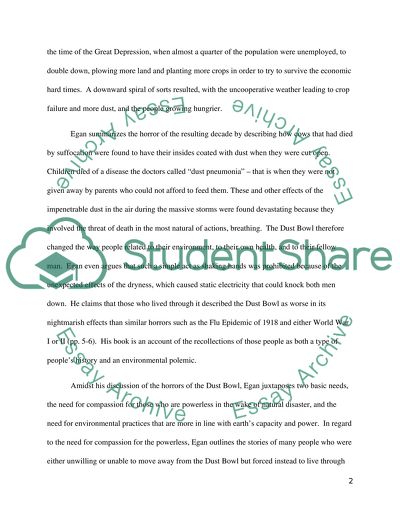Cite this document
(“The Worst Hard Time: The Untold Story of Those Who Survived the Great Essay”, n.d.)
Retrieved from https://studentshare.org/literature/1431049-the-worst-hard-time-the-untold-story-of-those-who-survived-the-great-american-dust-bowl-by-timothy-egan
Retrieved from https://studentshare.org/literature/1431049-the-worst-hard-time-the-untold-story-of-those-who-survived-the-great-american-dust-bowl-by-timothy-egan
(The Worst Hard Time: The Untold Story of Those Who Survived the Great Essay)
https://studentshare.org/literature/1431049-the-worst-hard-time-the-untold-story-of-those-who-survived-the-great-american-dust-bowl-by-timothy-egan.
https://studentshare.org/literature/1431049-the-worst-hard-time-the-untold-story-of-those-who-survived-the-great-american-dust-bowl-by-timothy-egan.
“The Worst Hard Time: The Untold Story of Those Who Survived the Great Essay”, n.d. https://studentshare.org/literature/1431049-the-worst-hard-time-the-untold-story-of-those-who-survived-the-great-american-dust-bowl-by-timothy-egan.


